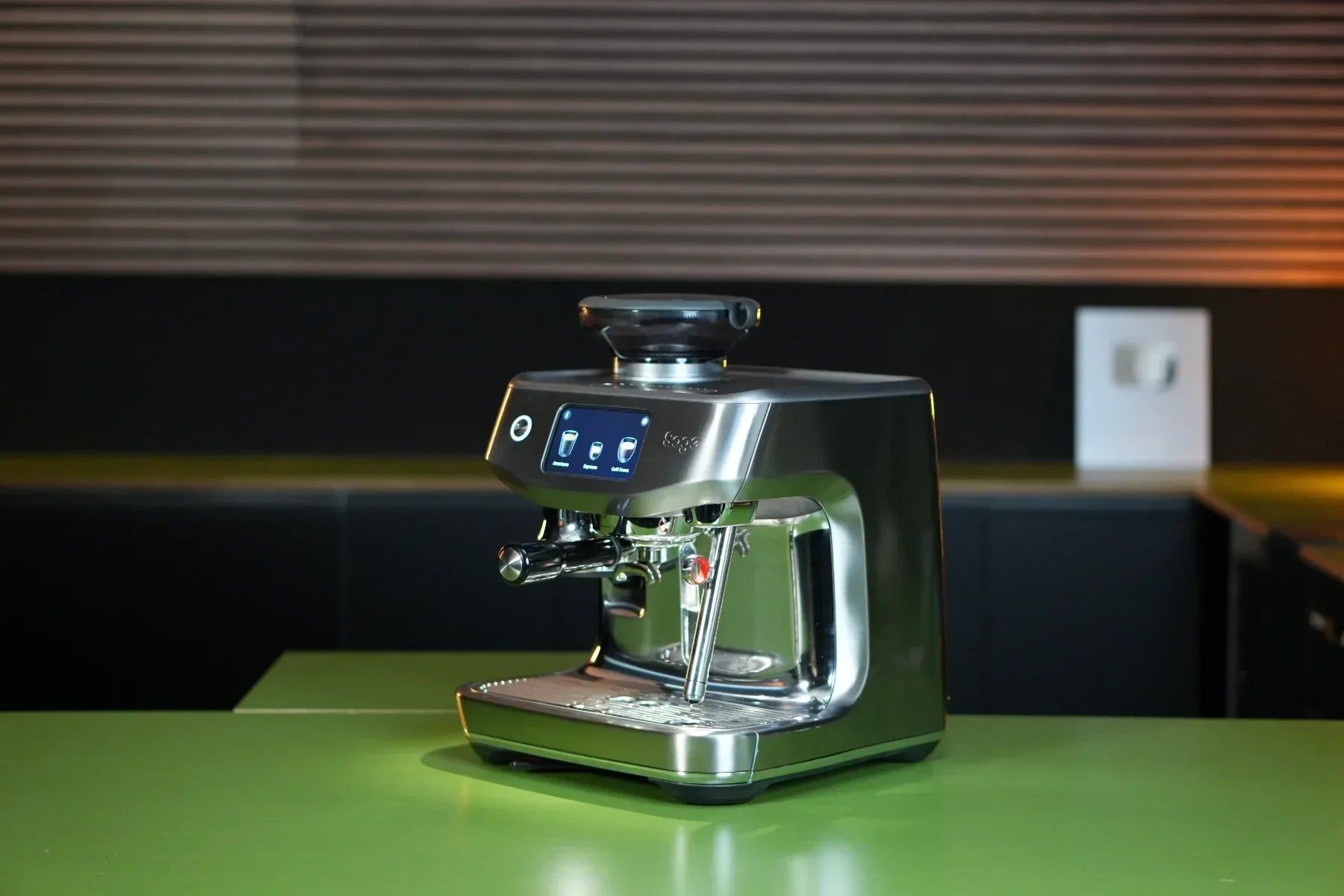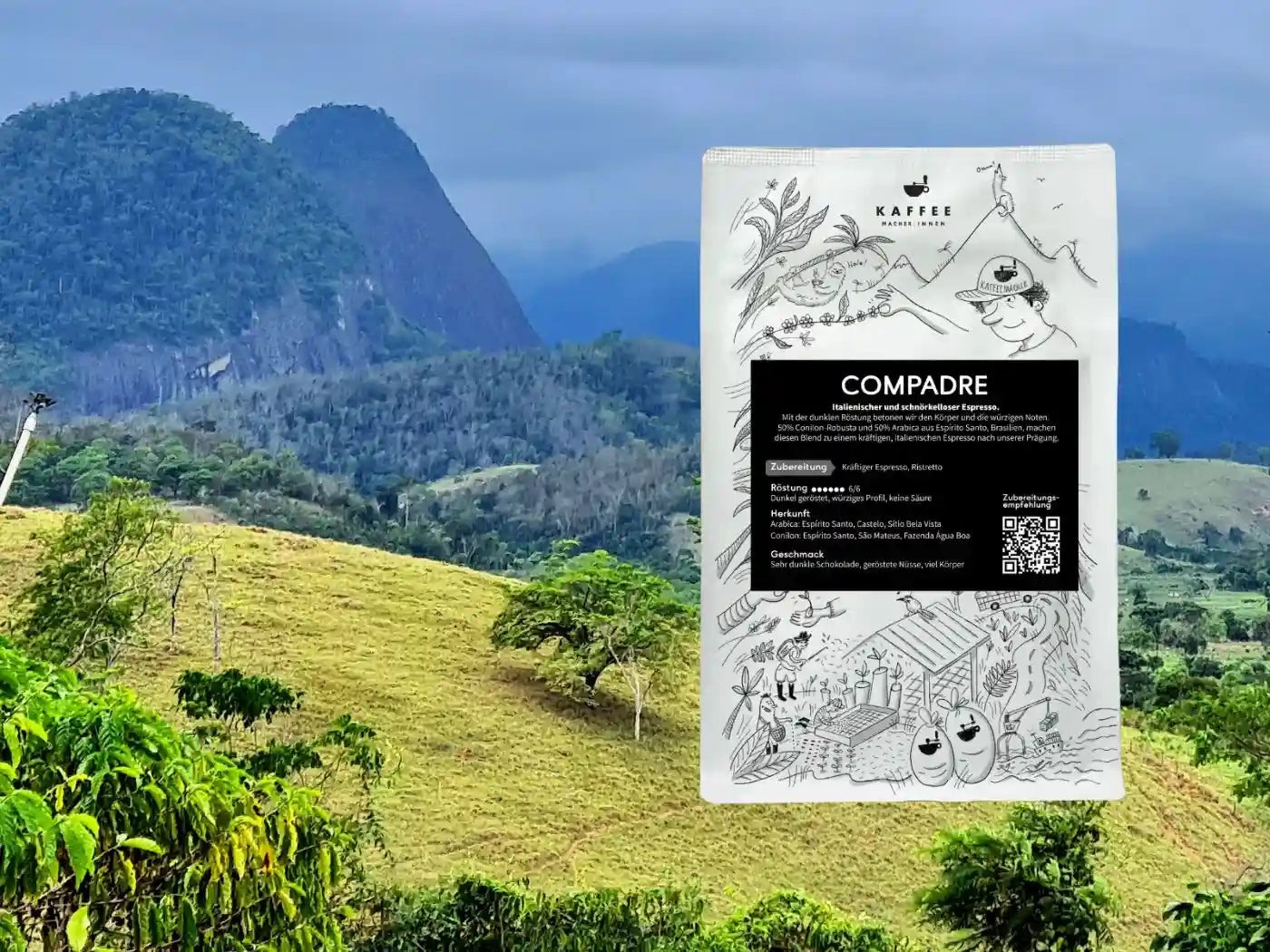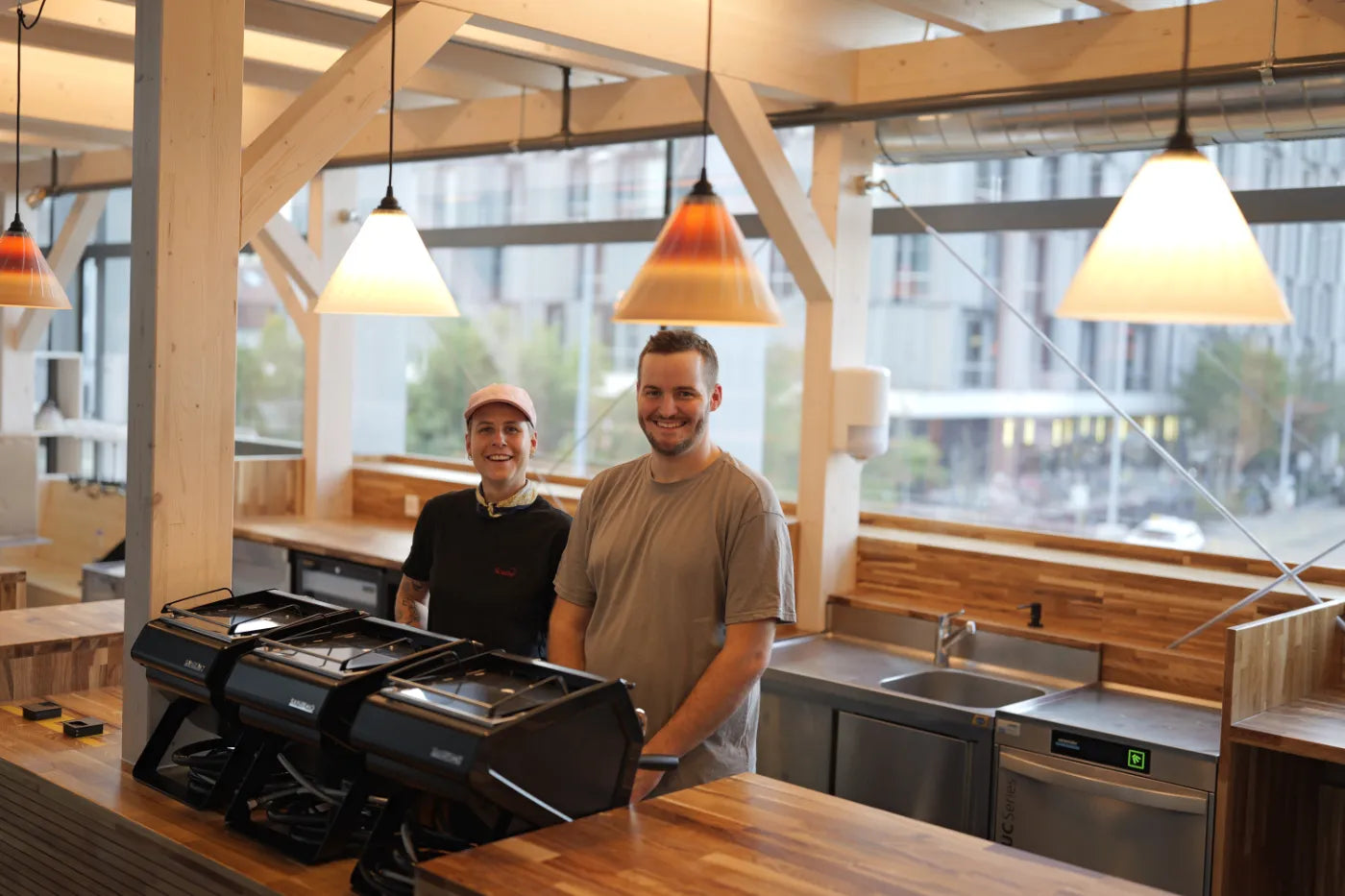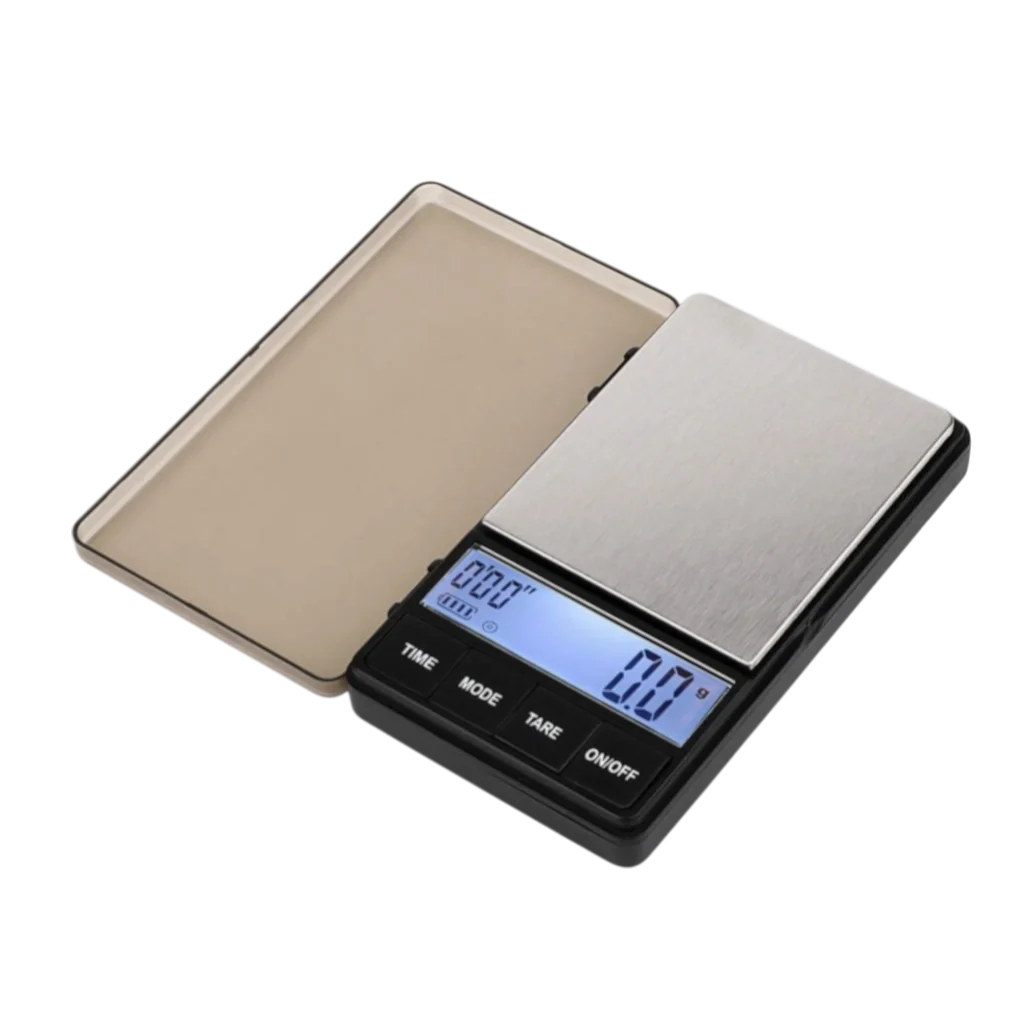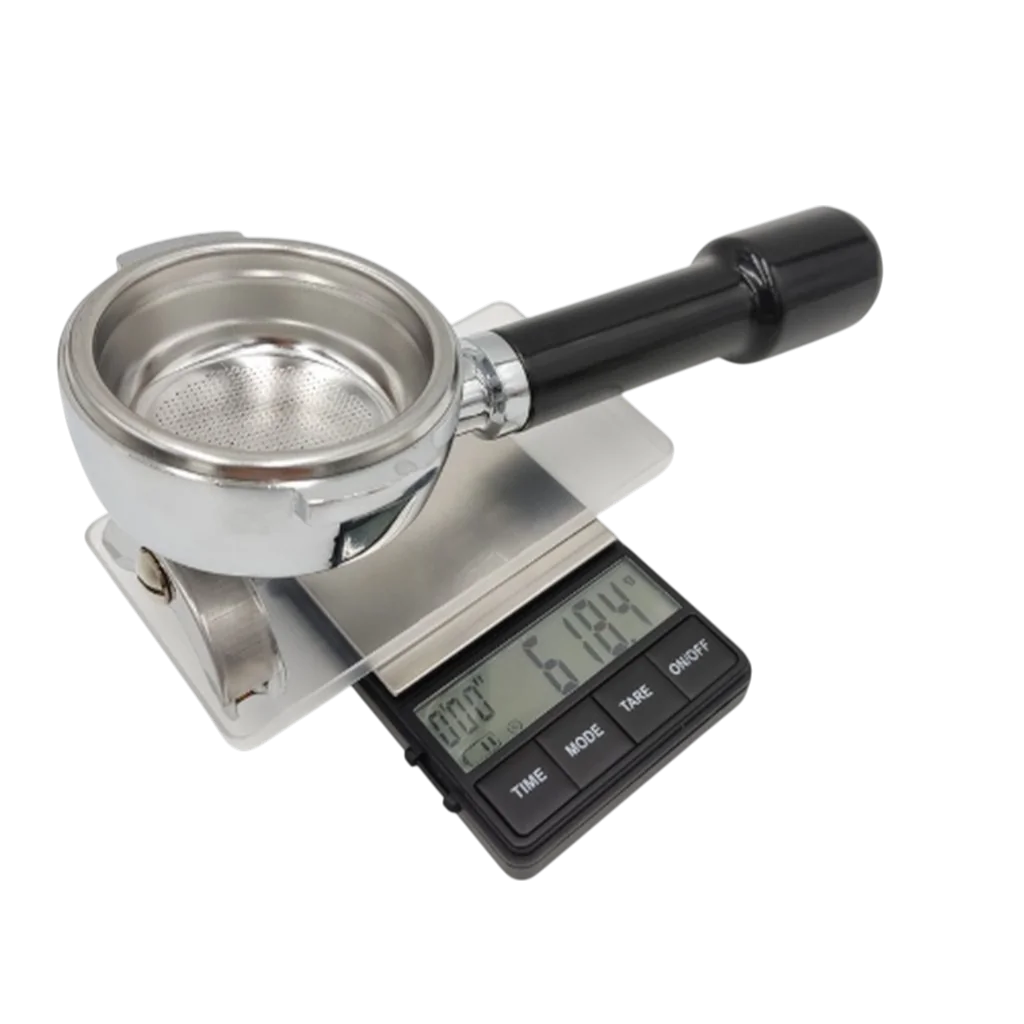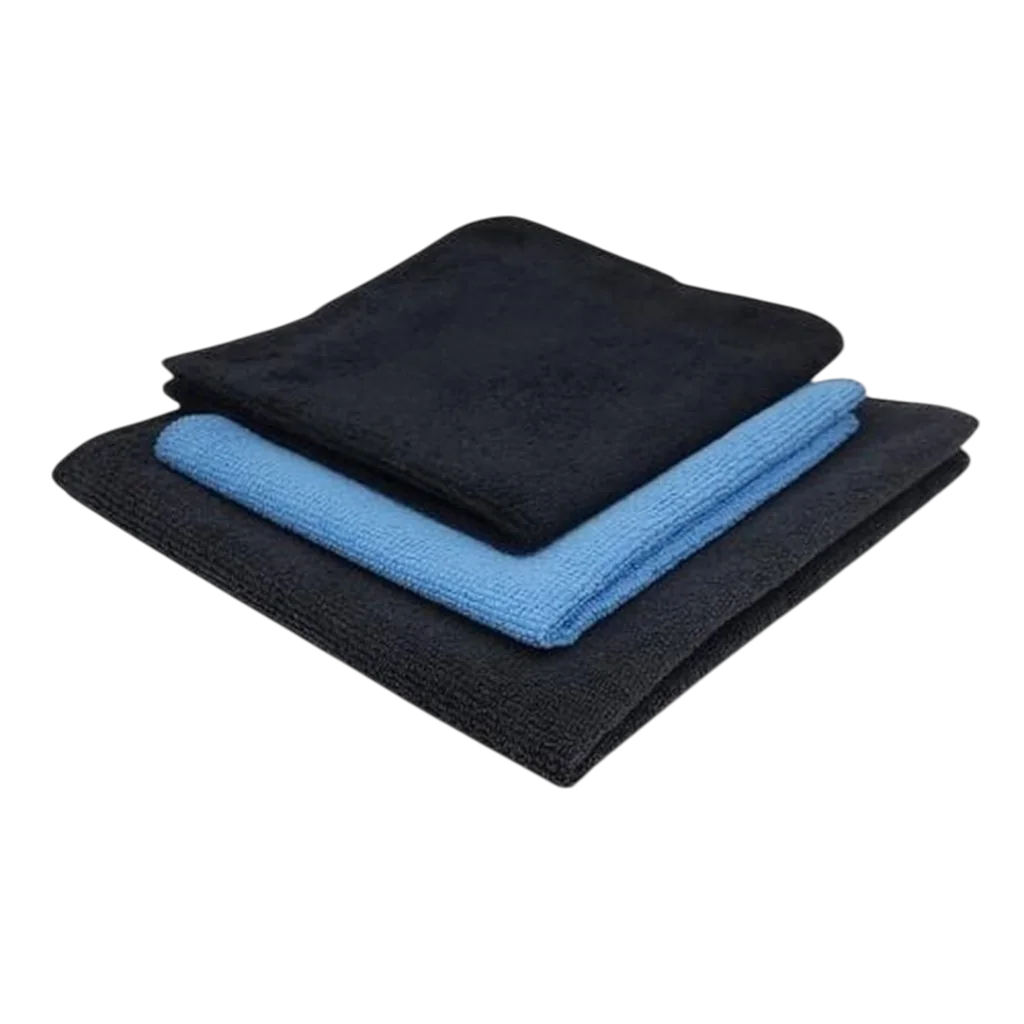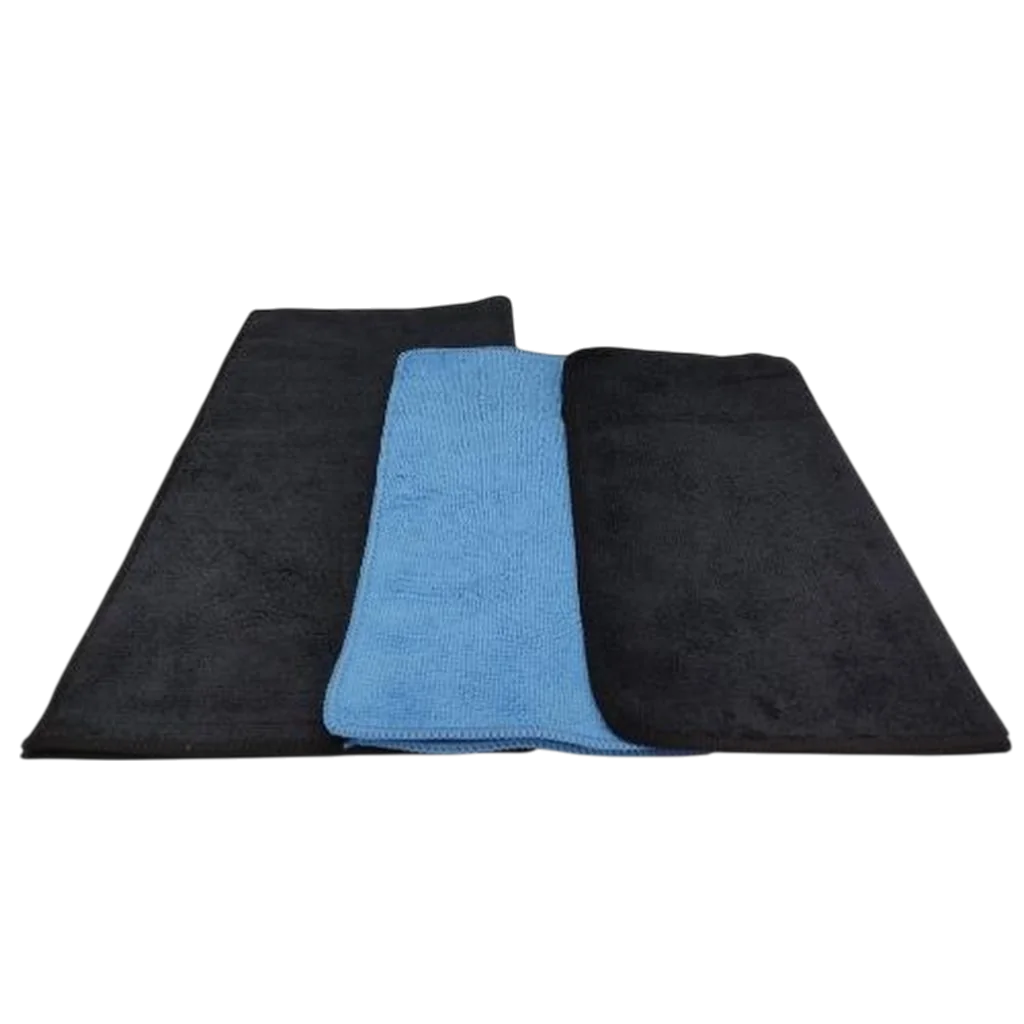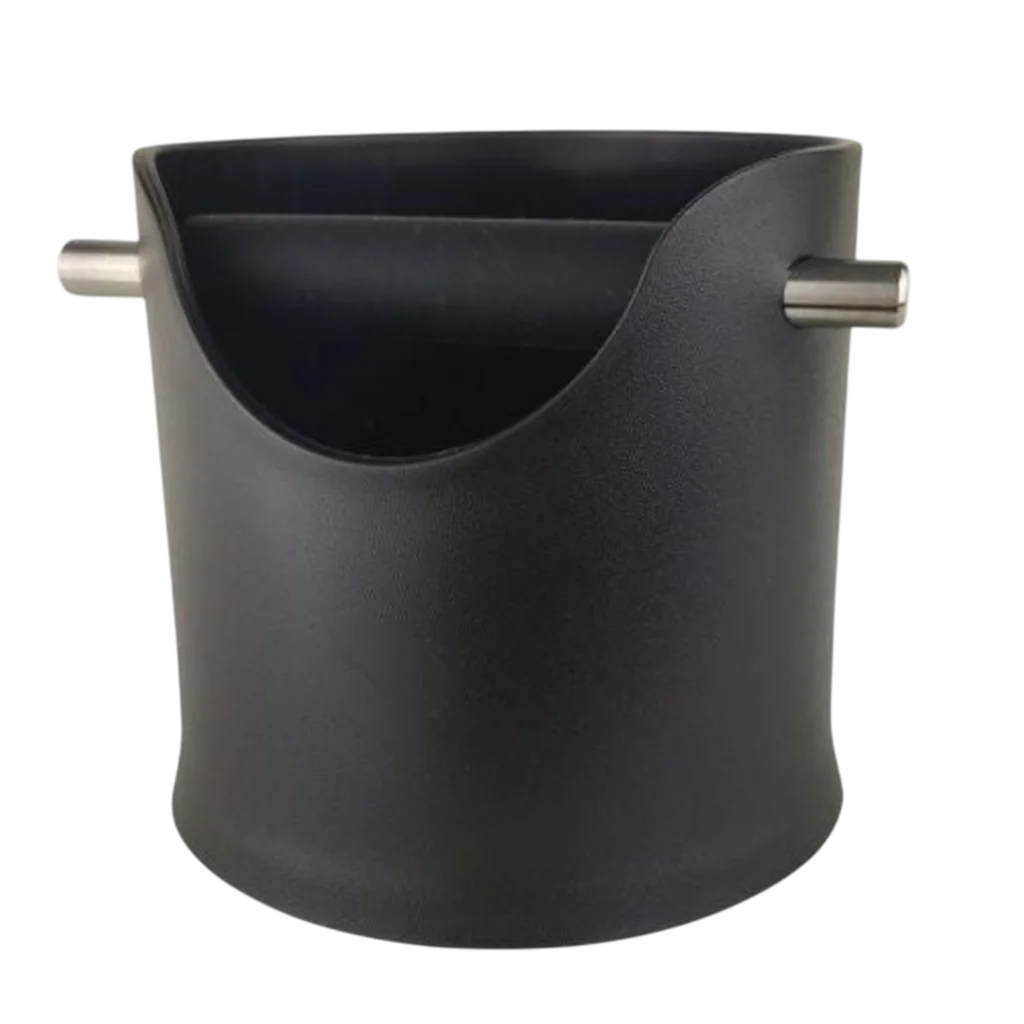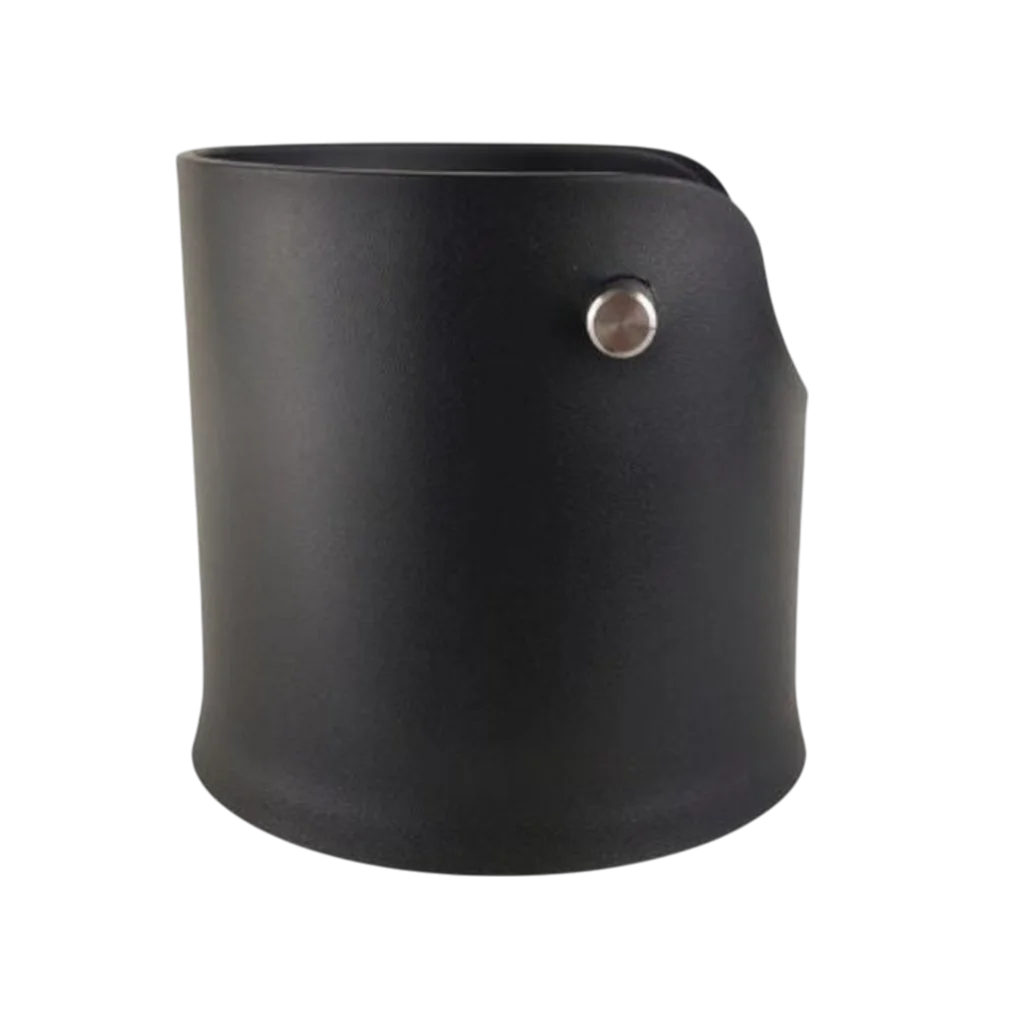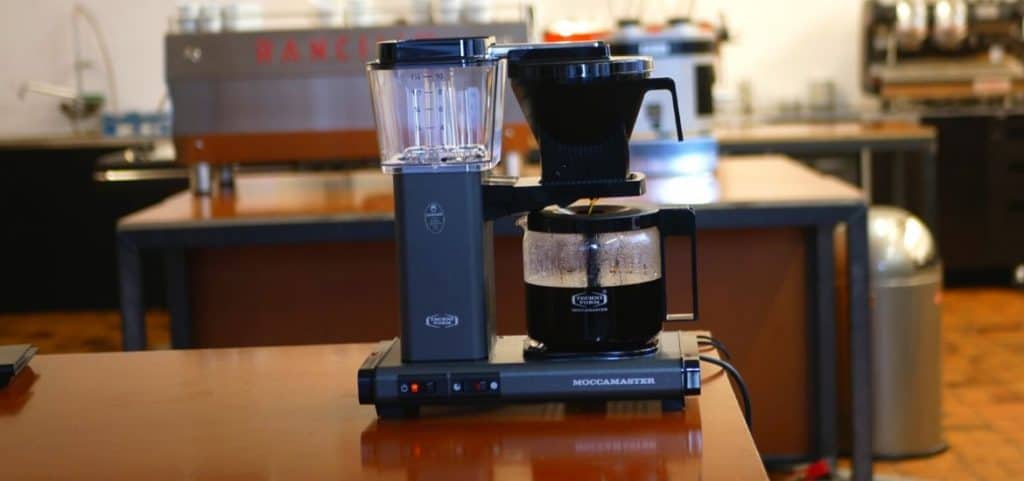The Moccamaster has an almost legendary reputation. It's prized for its design, craftsmanship, durability, and even the quality of its coffee. This piqued our interest. We subjected the brewer to an intensive test. We tested 40 brews with different coffees, brewing ratios, and quantities.
Our results are significantly more complex than the many positive online feedback. But first things first. As coffee makers, one thing is crucial to us: the quality of the coffee in the cup.
The following parameters are largely responsible for this: the temperature of the brewing water, the distribution of the brewing water over the coffee and the speed at which the coffee water is added.
The choice of coffee and grind size are important, but not influenced by the machine. Nevertheless, we offer tips for suitable coffees and an appropriate grind size.
Instructions Moccamaster – One button for coffee
Operating the Moccamaster KBG 741 is truly incredibly simple. In this respect, the Moccamaster hardly differs from most other filter coffee machines. Insert the filter bag, weigh the coffee, add water to the permanently mounted water reservoir, and start at the touch of a button. We wouldn't be coffee makers if we didn't clarify these instructions.
We generally recommend rinsing the paper filter thoroughly with hot water. This reduces the paper taste that would otherwise overpower the coffee later on. A positive side effect is that the coffee filter paper then sticks better to the edge of the filter holder. This reduces the likelihood of the paper filter collapsing inward and the water running past. You can't rinse too much water, but 300 ml is fine.
Then add the correct amount of ground coffee. The correct dosage depends on the desired volume of coffee. A good standard is 60 grams of coffee per liter of water. We discussed this in more detail in a detailed blog post .
We first brewed two cups: 18 grams of coffee and 300 ml of water, and 60 grams of coffee and 1000 ml of water. The respective amounts were added. We also weighed the water. We started the brewing process by pressing a button. We compared the taste of these two brews.
18g and 300 ml vs. 60g per 1000 ml
In a blind comparative tasting of the two brews, the larger-volume brew performed significantly better. "Better," in this case, meant that the coffee tasted more balanced and homogenous. It was also significantly stronger, meaning it had a more robust flavor. The 18g/300g brew had a slightly unpleasant acidity, but also lacked the expected complexity and flavor notes of the coffee.
We adjusted the grind of the 18g/300g a little finer and brewed more coffees. However, the results did not improve significantly. As you can see in Table 1, the strength in particular, i.e. the concentration of dissolved coffee particles, was relatively low, averaging just over 1.0%. This value can be measured with a refractometer. A desirable result is around 1.1–1.5% strength (TDS = total dissolved solids), with the rest of the beverage containing water. Finer grinds normally increase the resistance in the coffee, which leads to slower drainage of the brewing water and therefore more intensive extraction. However, we were unable to achieve significantly stronger brews with the amount of coffee and water used by refining the grind.
| grams | mg | Water | output | Strength | extraction | Brewing time | Drip cycle |
| 18 | 11 | 300 | 250 | 1.06% | 14.72% | 02:02 | 01:13 |
| 18 | 11 | 300 | 264 | 1.04% | 15.25% | 02:04 | 01:08 |
| 18 | 11 | 300 | 264 | 1.02% | 14.96% | 02:00 | 01:09 |
| 18 | 11 | 300 | 260 | 0.98% | 14.16% | 01:55 | 01:08 |
| 18 | 11 | 300 | 255 | 1.08% | 15.30% | 02:05 | 01:10 |
Table 1.
The target extraction rate is 18–22%. Extraction refers to the percentage of the coffee bean that is extracted. Higher extraction rates also result in a more pronounced strength in the cup. These two values are therefore interdependent (see also the blog post Strength and Extraction).
Table 2 shows the results of the 60g/1000g brew. Here, we achieved stronger results with the same brewing ratio. The strength averaged over 1.2% TDS, which is within the target range. Accordingly, the extraction was within the target range in two out of five brews. In theory, we could have increased the extraction by using a finer grind. However, the drainage in the filter was too slow and the water level was at its maximum. A finer grind would have caused the filter to overflow.
| grams | mg | Water | output | Strength | extraction | Brewing time | Drip cycle |
| 60 | 12 | 1000 | 887 | 1.21% | 17.89% | 04:33 | 03:32 |
| 60 | 12 | 1000 | 882 | 1.30% | 19.11% | 04:40 | 03:42 |
| 60 | 12 | 1000 | 896 | 1.12% | 16.73% | 04:21 | 03:27 |
| 60 | 12 | 1000 | 880 | 1.22% | 17.89% | 04:36 | 03:40 |
| 60 | 12 | 1000 | 886 | 1.23% | 18.16% | 04:33 | 03:33 |
Table 2.
A comparison of the brews shows that the extraction yield of the Moccamaster is better with a larger brewing volume. This is primarily due to the distribution of the water over the coffee cake. With a larger brewing volume, the brewing water captures all the coffee particles better and washes them out more effectively. This is primarily due to the design of the brewing head.
The well-intentioned brewing head
Almost all traditional filter coffee machines have the problem that the brewing water continuously drips onto the same spot in the coffee bed—usually right in the center. At this point, the coffee grounds are strongly swirled with every drop and bubble, and are thoroughly extracted by the constant flow of water. Meanwhile, many more coffee particles settle at the edge of the coffee cake, watching the extraction party in the center.

It doesn't take much to brew filter coffee well – except for consistent extraction. This is achieved when all coffee particles are in contact with the water for as long and as intensively as possible. Those who brew by hand practice precisely this technique. Evenly moistening and swirling everything produces delicious coffee.
Moccamaster has understood the principle and developed a rod-shaped brewing head with 9 holes. This is supposed to distribute the brewing water evenly over the coffee grounds. This isn't the case, at least not with the device we have. The water flows into the brewing rod and mostly drips out through the front holes. Ultimately, however, the location of the drips plays a subordinate role, as the water below the brewing head combines into a single, continuous stream.
We changed the angle of the brewing rod to rule out the possibility that it might be due to a slanted tabletop or something similar, but we kept getting the same result.
The result is that the brewing water is extracted predominantly from the center, leaving a large portion of the coffee grounds unevenly moistened. With larger amounts of water—which is why the 60g/1000ml brewing rate was better—this plays a minor role because a water bed forms on top of the coffee grounds anyway. But even in this case, the extraction is uneven.
This malfunction surprised us. The brewing head with multiple outlets demonstrates the correct principle. However, the water distribution isn't sufficiently pronounced to provide a significant improvement.

Improve brewing through swirling
If the brewing head isn't working as it should, that's when the hand brewer's tricks come into play. Simply stirring the coffee after about 20-30 seconds of brewing leads to significantly better brewing results. If you repeat the stirring once the entire amount of water has been added, the brewing results are significantly more homogenous and delicious.
| grams | mg | Water | output | Strength | extraction | Brewing time |
| 60 | 12 | 1000 | 885 | 1.36% | 20.06% | 05:10 |
| 60 | 12 | 1000 | 881 | 1.31% | 19.24% | 04:58 |
| 60 | 12 | 1000 | 887 | 1.32% | 19.51% | 05:00 |
| 60 | 12 | 1000 | 884 | 1.35% | 19.89% | 05:02 |
| 60 | 12 | 1000 | 889 | 1.29% | 19.11% | 04:57 |
Table 3
Table 3 also shows, among other things, a significantly longer brewing time. This is due to the fact that the entire coffee now forms a resistance. Stirring at the end of the brewing process deliberately creates a rotation that swirls the coffee particles at the edge into a vortex and rotates them for a large portion of the brewing process.
Brewing temperature of the Moccamaster
Generally, the brewing temperature should be constant. Exceptions prove the rule. There are coffees that simply taste best when brewed at 80 degrees Celsius. In my filter coffee courses, I almost always conduct a test: Participants brew the same coffee at 50, 60, 70, 80, 90, and 100 degrees Celsius. There's a clear trend that the coffee brewed at 90 degrees Celsius tastes best. Occasionally, individual coffees also perform well at other temperatures. A brewing temperature of 92–94 degrees Celsius is the most popular brewing temperature across all brewing methods.

The Moccamaster brews very consistently – but the temperature is slightly too high. It heats up incredibly quickly. On the first brew of the day, it's ready to brew in less than 20 seconds, and the first drops of water drip onto the coffee.
We measured the temperature directly at the water outlet. The first splash of water dripped onto the coffee at a temperature of 60 degrees Celsius. However, it was only a few milliliters, which presumably cooled due to the heat exchange with the metal brewing rod. Subsequently, the Moccamaster brews very precisely and consistently at 98–99 degrees Celsius at the outlet throughout the entire brewing cycle. The impact temperature is barely lower because the brewing head is close to the coffee. In other words, the brewing temperature is very high—in fact, too high for many coffees. These high temperatures tend to intensify the bitterness in coffee.
A brewing temperature of 98 degrees Celsius is certainly an option for very clear and light-roasted coffees that naturally have little bitterness and are very transparent. However, this temperature is too high for the vast majority of coffees. It becomes particularly critical for coffees that are not specialty coffees and tend to be dark roasted. Here, a brewing temperature of around 90 degrees Celsius or lower would be the best choice.
Surge vs. Continuous Brewing and Pre-Brew
The Moccamaster brews continuously from the first drop to the last. From the moment brewing starts, water is added in a steady flow. We tested the flow using the intriguing scale from Black Mirror. The scale actually consists of two scales. It measures the weight of the water being poured onto the filter and the amount of brewed coffee already in the pot.


Continuous brewing is well-suited for delivering consistent results from extraction to extraction. Flash brewing, also called pulse brewing, adds the water in bursts. The first burst is intended as a preliminary brew. A small amount of water is added during this time. The CO2 produced during roasting can escape. CO2 isn't tasty, and its escape creates turbulence in the coffee cake. This blooming process is especially useful for darker roasts, as these have significantly more CO2 bound.
Another reason why we recommend using the Moccamaster primarily for lighter roasts.
The following graphic shows two brewing sessions we captured with the Black Mirror app. The one on the left was brewed with the Moccamaster, the one on the right was brewed by hand.
Conclusion and outlook Moccamaster KBG 741
We put the Moccamaster through its paces. This is the third filter coffee machine we've tested in a series of coffee machines. Our background is in manual brewing. The author was a Swiss Brewers Cup champion (filter coffee champion) and a multiple runner-up. The standards for good filter coffee are high – but not all that difficult to achieve. As mentioned at the beginning, a few basic parameters must be met.
We are focusing on automatic filter coffee machines because we expect that in the future, an automatic machine will be able to achieve greater consistency over many consecutive brewings – while maintaining consistent quality.
The Mokkamaster isn't that machine yet. Compared to hand-brewed filter coffee, the Mokkamaster delivers satisfactory to good results with light roasts and poor to satisfactory results with dark roasts.
Its temperature is very consistent – but unfortunately too high. The water distribution is well-designed, but doesn't work adequately in practice. The biggest advantages of the machine are its excellent workmanship and the 5-year warranty.
These tests were conducted with our test device, which we purchased like all other test devices.
![]()
